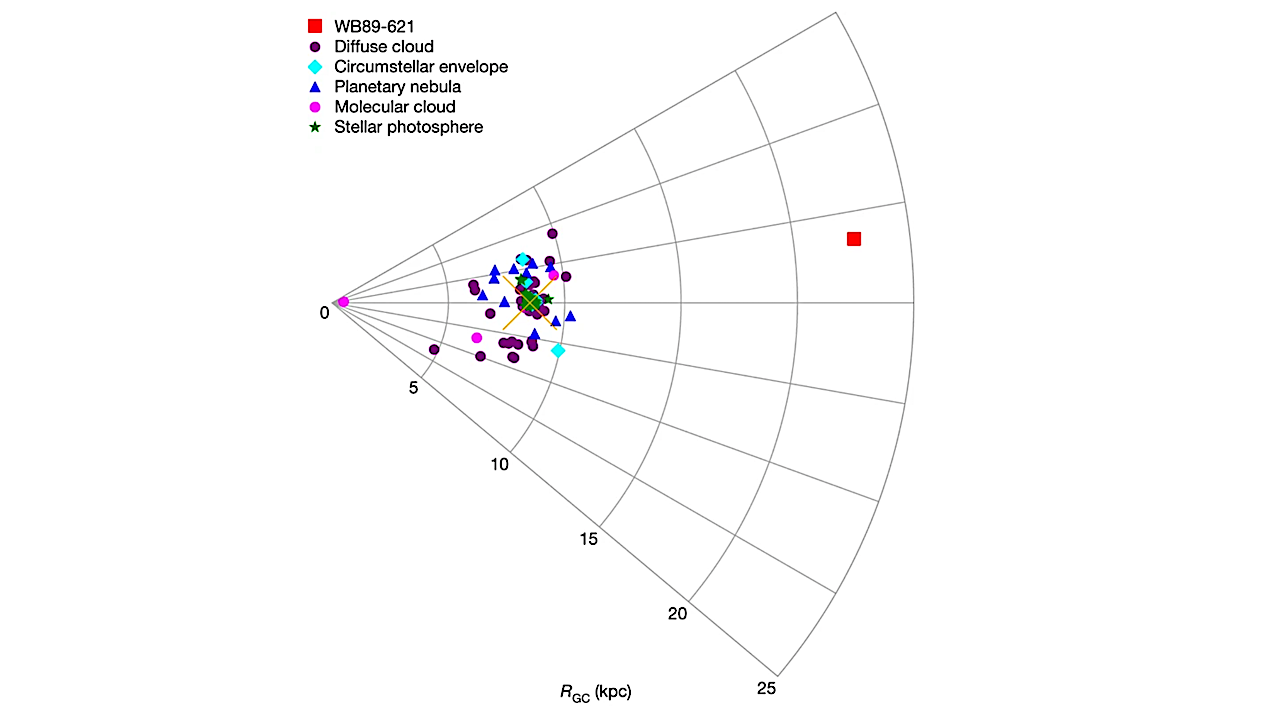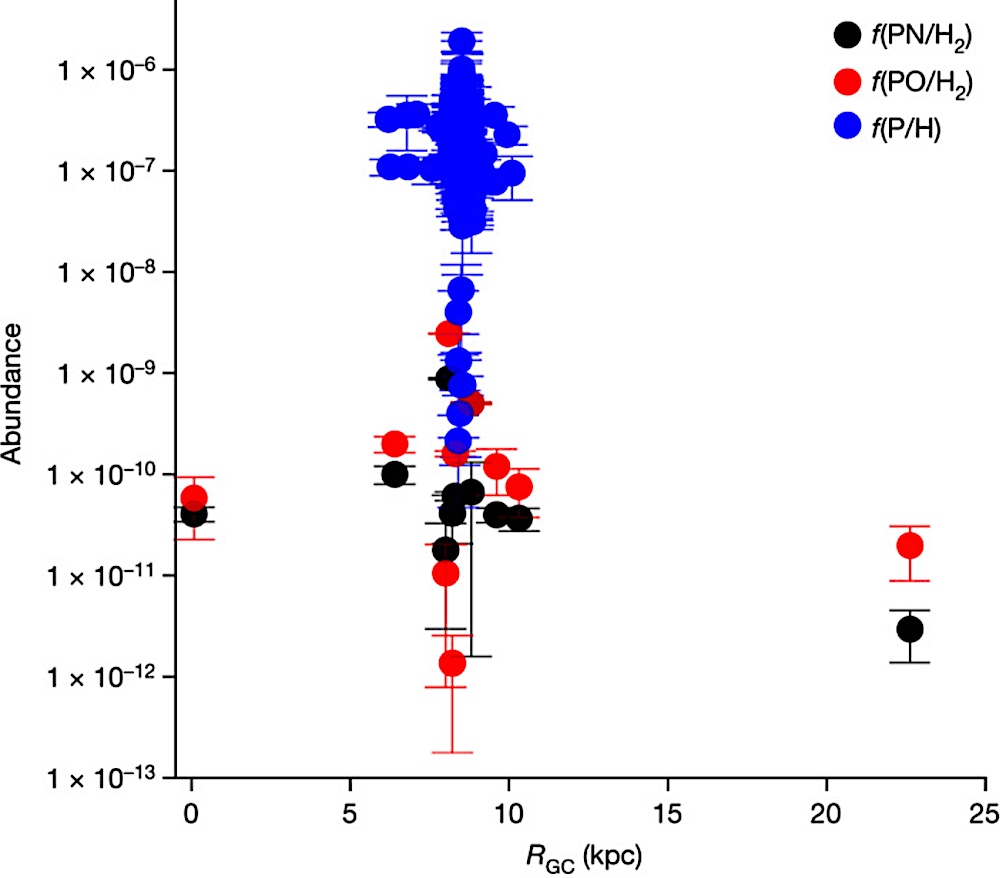Phosphorous Has Been Discovered In The Outer Reaches Of The Milky Way

Despite its importance in planet formation and biology, phosphorus has been identified only in the inner 12 kpc of the Galaxy2-19. The study of this element has been hindered in part by unfavourable atomic transitions.
Phosphorus is thought to be created by neutron capture on 29Si and 30Si in massive stars, and released into the interstellar medium by Type II supernova explosions. However, models of galactic chemical evolution must arbitrarily increase the supernovae production to match observed abundances.
Here we present the detection of gas-phase phosphorus in the Outer Galaxy through millimetre spectra of PO and PN. Rotational lines of these molecules were observed in the dense cloud WB89-621, located 22.6 kpc from the Galactic Centre. The abundances of PO and PN in WB89-621 are comparable to values near the Solar System. Supernovae are not present in the Outer Galaxy, suggesting another source of phosphorus, such as ‘Galactic Fountains’, where supernova material is redistributed through the halo and circumgalactic medium.
However, fountain-enriched clouds are not found at such large distances. Any extragalactic source, such as the Magellanic Clouds, is unlikely to be metal rich. Phosphorus instead may be produced by neutron-capture processes in lower mass asymptotic giant branch stars which are present in the Outer Galaxy. Asymptotic giant branch stars also produce carbon21, flattening the extrapolated metallicity gradient and accounting for the high abundances of C-containing molecules in WB89-621.

Abundances of PN and PO, as well as atomic phosphorus, as a function of distance from the Galactic Centre. Molecular abundances, relative to H2, are plotted with respect to RGC (kpc) for AFGL 5142, G + 0.693-0.03, W3(OH), W51, L1157, Orion-KL, B1-a, NGC 1333-IRAS 3, Ser SMM1, L723 (ref. ) and WB89-621. Atomic abundances from sources in Fig. 1 are also displayed. Abundances of PO, PN and atomic P are shown in red, black and blue, with 3σ estimated uncertainties. From 8.5 to 22.6 kpc, abundances of PO and PN decrease by a factor of 1.5 and 2.3, respectively, showing little decrease in the Outer Galaxy.
L A Koelemay, KR Gold, L M Ziurys
PMID: 37938703 PMCID: PMC10632128 DOI: 10.1038/s41586-023-06616-1
Phosphorus-bearing molecules PO and PN at the edge of the Galaxy, Nature (open access)
Astrobiology, Astrochemistry








